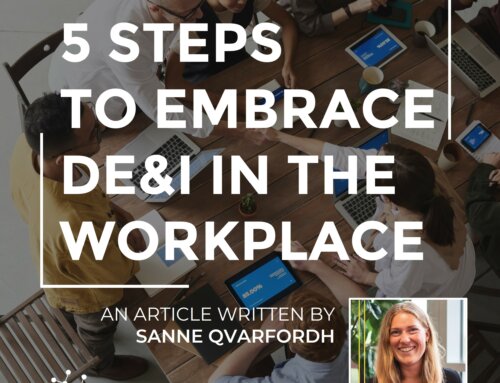Inclusion Has a Significant Impact on the Bottom-Line,
But Only If You Walk the Talk
It is no longer a novel claim that successful management of diversity and inclusion is correlated with better performance. In fact, integrating these elements as part of the business strategy has become rather mainstream. While many companies claim diversity and inclusion mainly as a way to attract employees, some realize the performance gains to be made and make a real effort. One of the many aspects of diversity and inclusion is equality. This aspect is all about ensuring that everybody has equal opportunities and is not treated differently because of their characteristics.
To this effect, gender is a very important characteristic: companies can simply not afford to ignore 50% of the potential workforce and expect to be competitive. Still, women continue to be disadvantaged in the workplace compared to men. And that hurts your performance. We know that organizations led by women create 20% more coherent organizations and that coherent teams perform better. Failing to improve gender equality, therefore, results in a missed opportunity to outperform your competition.

Figure 1 This graph shows that the connectivity impact of women increases with organizational size.
The organizations led by women are more cohesive and agile (low steps to connect everyone) than organizations led by men.
How to seize the opportunity of gender equality
You need to take the right evidence-based actions and engage the right employees who have the trust and respect of their colleagues.
This is not visible in your organizational charts. It’s visible in your informal networks between people. Only then you know what the barriers are for inclusion in general and gender equality specifically.
Your interventions then become the real efforts to improve inclusion and equality has a significant impact on the bottom-line. Don’t stay ignorant – find out how diversity and inclusion impact the collaboration in your organization!
How a FinTech startup tackled gender equality
A fast-growing FinTech startup wanted to be at the forefront of improving gender equality in their industry. The company campaigned and issued research on gender equality in the financial sector. They promoted fair compensation for women and the closure of the gender gap in equity ownership. The only problem was that they did not seem to practice what they preached.
In 2020, a scandal unfolded around the company, as several current and former employees came forward with accusations of various forms of gender discrimination. The problem was systemic in their organization and came all the way from the top. These accusations even resulted in a gender discrimination lawsuit.
Network data on this company reflect the picture of gender inequality brought forward by the employees. The data revealed a bias on all hierarchical levels of asking men for help and advice rather than women.

This table should be read from row to column. This way you can see the interactions with other specific groups. For example, 1% of all interactions from male leaders are with female leaders whereas 64% of all interactions from male leaders are with fellow male leaders.
What can we learn from the FinTech startup?
The intent is not sufficient to realize the opportunity of gender equality. It requires active and continuous engagement. This involves changing the culture and norms within the organization, aimed to reduce existing biases.
A study by 3Circle Partners described in the book “Close the Interaction Gap” finds that 79% of a team’s potential is lost due to the gap created because team members fail to tap into the knowledge and expertise of their colleagues.
This fact reinforces what our data clearly shows:
“real efforts to improve inclusion and equality have a significant impact on the bottom-line!”
Do you like our articles? Subscribe to our newsletter.






